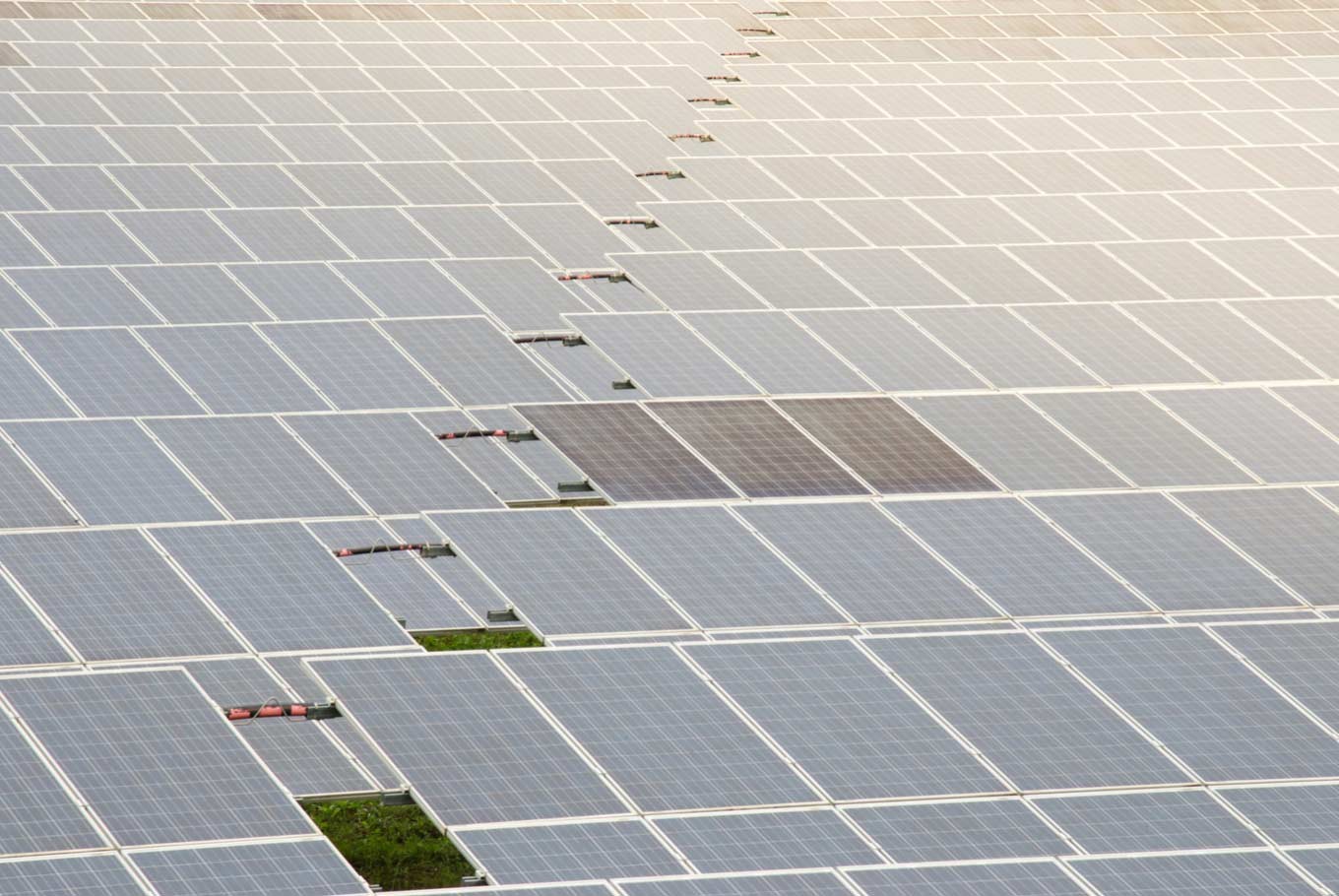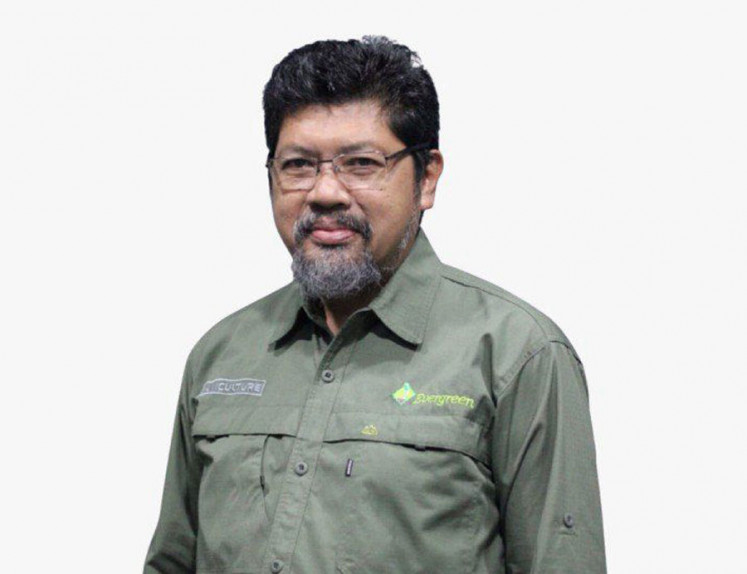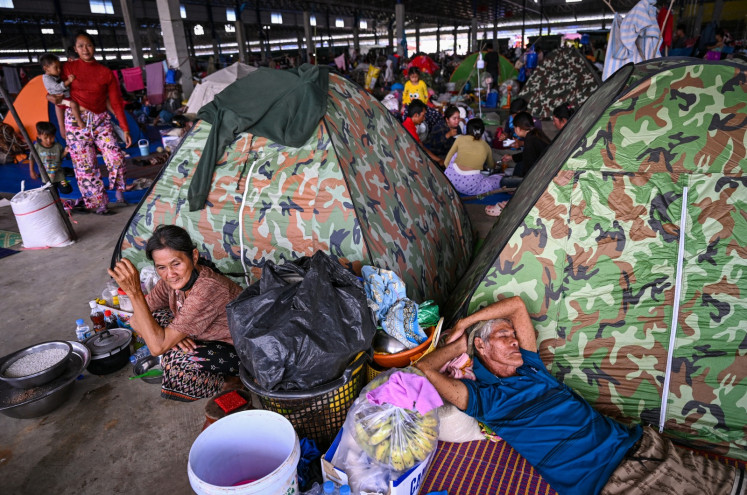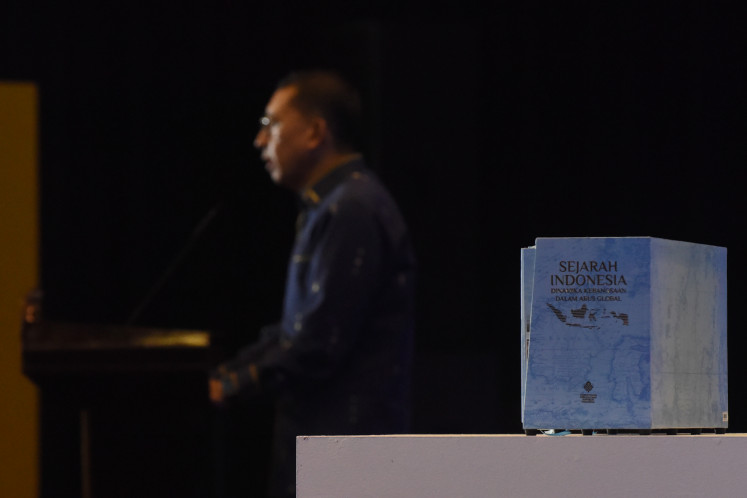Popular Reads
Top Results
Can't find what you're looking for?
View all search resultsPopular Reads
Top Results
Can't find what you're looking for?
View all search resultsEDITORIAL: Powering renewable energy
The government should fully support the initiative of the House of Representatives, which is drafting a bill on the development of renewables.
Change text size
Gift Premium Articles
to Anyone
A
t first glance, Energy and Mineral Resources Minister Ignasius Jonan’s visit to Jambi last Wednesday to open a power plant for the Asian Agri palm oil group seemed rather unusual and quite insignificant, as the plant’s generation capacity is only 2.2 megawatts (MW), compared to the 30,000 MW planned to be completed by 2019.
However, the plant is of great importance for two reasons. First, it supports the government’s commitment to doubling the role of renewable energy in the country’s energy mix to 23 percent in 2025 from 11 percent. Second, the small plant is fired by palm oil waste, which is available in abundance throughout the country.
At present, most palm oil mill effluent (POME) from the processing of palm oil fruits at the estimated 950 mills across the country is still wasted, mostly burned, thereby releasing a huge amount of methane into the atmosphere. But the plant in Jambi harnesses the POME into biogas for power generation. The ministry has estimated that with more than 11 million hectares of plantations currently feeding the nearly 1,000 mills, the biogas from the waste could generate more than 1,000 MW.
The beauty of this renewable energy is that since the mills are located in rural areas, many of which are not connected to the national grid of the State Electricity Company (PLN), the potential power generation fits well and supports the rural electrification program.
Many palm oil companies have built small POME-fired power plants with capacities of 1 to 2.2 MW, both for their own use and for the households around their plantation concessions. But even such a small capacity of 1 MW is already sufficient to serve 2,000 households.
But the government still needs to issue more conducive policies and provide more incentives to encourage palm oil companies to harness their palm oil processing waste for power generation because, as Asian Agri said, a 2.2 MW plant costs about US$6 million.
The government has stepped up the development of renewables such as microhydro, wind and solar power. In December 2015, for example, President Joko “Jokowi” Widodo inaugurated a 5 MW solar power plant in Kupang, East Nusa Tenggara province. Norwegian investors have developed microhydro plants in South Sulawesi. Likewise, Singapore and Danish investors are also building wind power plants in Sulawesi.
The ministry issued a regulation last year obliging PLN to buy electricity from private producers using renewable energy. Investors will be pleased with the certainty that PLN will take the electricity generated by renewables, but they need more incentives and a stronger legal foundation.
Even though we already have the 2007 Energy Law, there is still a need for separate legislation governing the various aspects of the development of all renewables, such as feed-in tariffs, fiscal incentives and power purchasing agreements with PLN to give investors stronger legal certainty.
In this context, the government should fully support the initiative of the House of Representatives, which is drafting a bill on the development of renewables.










